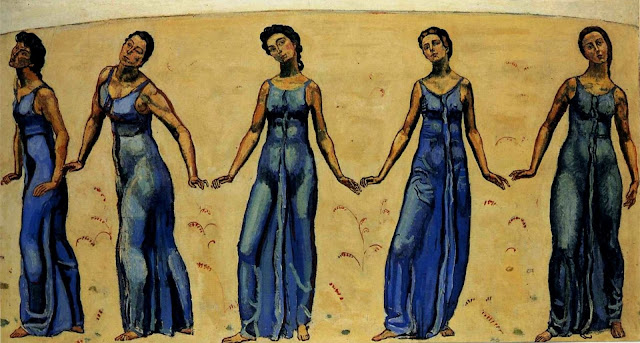Lyonel Feininger’s Cathedral (1919)
Lyonel Feininger, the twentieth century painter and the
founding member of the Bauhaus school, is revered to be one of the most
significant artists of his time. Lyonel Feininger was an equally talented
printmaker, photographer and he started his journey in the realm of art with
cartooning. Lyonel Feininger’s started in the early twentieth century Germany Museum of Modern Art , New York
“Cathedral (1919),” Woodcut - Museum
of Modern Art , New York Museum of
Modern Art , New York
The description of the artwork “Cathedral (1919)” &
analysis: Lyonel Feininger’s works were equally powerful in woodcut so much so
that it illustrated the manifesto of Bauhaus. He created this piece;
“Cathedral” in woodcut which, in all its glory, appeared in one of the most
significant historic document charting the evolution of avant-garde art, the
Bauhaus manifesto. The work, in the manifesto, represented the utopian vision
of the Bauhaus school depicting realizing a "Cathedral of Socialism."
In the painting Lyonel Feininger deliberately uses the Gothic cathedral
referencing its communal belonging into a spiritual vision as he also indicates
towards the joint efforts of the artists and artisans who have made their
collective vision into a reality. The “Cathedral” spoke to the collective and
did have it’s unique representation in the formulation of the Bauhaus. His
initiation with the painting has finally been able to bring together the
efforts of arts and crafts. The school, soon turned towards the aesthetics of
machines with the coming of 1920s, the founding of the school was marked by a
sense of spiritual harmony between the two different practices. The very
harmony is not represented simply by the church but was also integrated into
the dymanics with the practice of the same aesthetics. The “Cathedral” was the
figuration of a cosmic space reflecting the magnificence of light, a belief
among its contributors that has been built up into the angular structure of the
depiction of Cathedral. The transparencies and the structure reflect the
influence of Bruno Taut's utopian glass architecture. Check out the piece by
Lyonel Feininger online. If you like the paintings and are drawn to explore
more, you can also thing about buying Lyonel Feininger’s paintings online.
The early Bauhaus culture was deeply inspired by the
representations of the structures and sense of community that of the medieval
guilds. Lyonel Feininger's individual connection to the Gothic specifically
asserted this influence into the practice of the Bauhaus style. Lyonel
Feininger used abstraction inn a whole new form in the artwork of cathedral
which rendered the piece to be something that is undeniably modern. The artwork
showed features that have inclinations toward the Cubist fracturing of forms as
well as it resembles the Futurist dynamic force lines which was taken up by
Lyonel Feininger represented with his own style of woodcut. The execution of
the work has been purposefully crude and thus evokes pre-industrial
imperfections. The work showcased a Cubo-Expressionism that is combining
elements taken from the radical and revolutionary fronts of the movements of
avant-garde. The work in woodcut has been created following an old fashioned
and hand-rendered process which is painstakingly long. The process connects the
Bauhaus orientation to that of the middle ages before thr more sophisticated
processes of printmaking were developed. The work, in both its subject and
style, echoed the very spirit of Bauhaus manifesto that speaks of the need for
social change and the struggle to bring about a revolution by the ways of
training the artists and the craftsmen to make happen a new age in art of
rebuilding.
Lyonel Feininger’s blend of the avant-garde art and the traditional
influences rendered a model visually modern while it is conventional in its
references of symbolism. Lyonel Feininger’s works demands our deep inspection,
go through the works and if you like Lyonel Feininger’s paintings you can go
ahead and buy Lyonel Feininger’s paintings online. Lyonel Feininger’s initiated
philosophy of art dominated the Bauhaus ideology in the early years of
modernism.



Comments
Post a Comment